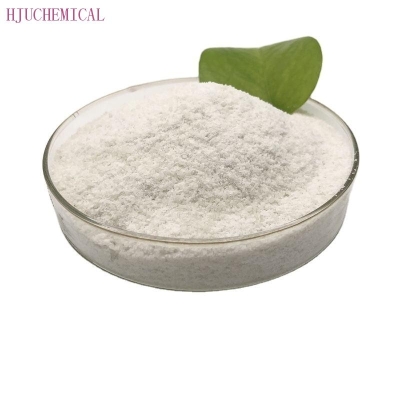-
Categories
-
Pharmaceutical Intermediates
-
Active Pharmaceutical Ingredients
-
Food Additives
- Industrial Coatings
- Agrochemicals
- Dyes and Pigments
- Surfactant
- Flavors and Fragrances
- Chemical Reagents
- Catalyst and Auxiliary
- Natural Products
- Inorganic Chemistry
-
Organic Chemistry
-
Biochemical Engineering
- Analytical Chemistry
- Cosmetic Ingredient
-
Pharmaceutical Intermediates
Promotion
ECHEMI Mall
Wholesale
Weekly Price
Exhibition
News
-
Trade Service
As the world's petroleum resources become more and more tense, people are forced to find a cheap, widely sourced, easy-to-process, and environmentally friendly inorganic mineral to partially replace petrochemical products
.
Calcium carbonate has become the first choice among fillers due to its abundant resources, low price and good comprehensive performance.
It is the most widely used and most used inorganic filler in film processing
.
Adding appropriate calcium carbonate to the polymer can not only reduce costs, but also improve certain aspects of performance and increase its added value
.
Many polymers can be made into films, and the film has a wide range of applications, mainly used as packaging materials, protective agricultural films, and mulching films
.
The application of calcium carbonate in polyethylene film? The film-forming effect of polyethylene is better, and the properties of different kinds of films are different.
The properties of polyethylene film with calcium carbonate have been improved in many aspects, for example, it can improve: The mechanical properties of the film, the thermal stability of the product, the anti-fogging performance of the film, etc.
, can promote the degradation of the film, and play a positive role in environmental protection
.
In addition, the addition of calcium carbonate can improve the moisture permeability, freshness and air permeability of the polyethylene film
.
It is reported that polyethylene film with calcium carbonate is currently the most widely used and most used plastic packaging film, accounting for more than 40% of the consumption of plastic packaging film
.
The application of calcium carbonate in polypropylene film? Films made of polypropylene materials have good properties.
Except for a small amount of polypropylene films that are blown, most of them use biaxial stretching technology to make highly oriented films
.
Biaxially oriented polypropylene film is widely used in printing, laminating, adhesive tape, etc.
due to its non-toxicity and excellent mechanical strength
.
In addition, calcium carbonate can also be used in polypropylene microporous membranes prepared by thermally induced phase separation.
Due to the excellent properties of polypropylene itself, the microporous membranes prepared with it have both the high-efficiency separation ability of functional membranes and the performance of plastic films.
Excellent mechanical properties, can be widely used in industry, medicine, energy, military and daily life
.
? Application in polyvinyl chloride and related varieties of film? Calcium carbonate can be used for polyvinyl chloride film.
When its dosage is increased within the specified range, it can increase the tensile strength and elongation at break of the film
.
Calcium carbonate can also be used in polyvinylidene chloride membranes.
In addition to adjusting the barrier properties of the membrane, the addition of calcium carbonate can also improve the processing properties of the polyvinylidene chloride and the mechanical properties of the membrane
.
Calcium carbonate can also be used for polyvinylidene fluoride membranes.
The porosity of polyvinylidene fluoride membranes prepared by thermally induced phase separation can be changed by changing the content and particle size of calcium carbonate to control the morphology and structure of the porous membrane.
Purpose
.
Through the treatment, while increasing the porosity of the membrane, the water flux and rejection rate of the membrane can also be increased
.
? Calcium carbonate film preparation? Because calcium carbonate has poor compatibility with polymers, if it is added directly, it is difficult to disperse the filler uniformly, resulting in difficult processing of the filling system, poor product performance, and limited filler dosage
.
In order to solve these problems, calcium carbonate is usually surface-treated
.
Calcium carbonate after surface treatment with coupling agents such as silane, titanate or aluminate is usually combined with the base resin in the form of surface adsorption, physical winding, van der Waals force, and the like
.
Compared with the unmodified calcium carbonate, the modified calcium carbonate is more uniformly dispersed in the resin, and the film performance is better
.
.
Calcium carbonate has become the first choice among fillers due to its abundant resources, low price and good comprehensive performance.
It is the most widely used and most used inorganic filler in film processing
.
Adding appropriate calcium carbonate to the polymer can not only reduce costs, but also improve certain aspects of performance and increase its added value
.
Many polymers can be made into films, and the film has a wide range of applications, mainly used as packaging materials, protective agricultural films, and mulching films
.
The application of calcium carbonate in polyethylene film? The film-forming effect of polyethylene is better, and the properties of different kinds of films are different.
The properties of polyethylene film with calcium carbonate have been improved in many aspects, for example, it can improve: The mechanical properties of the film, the thermal stability of the product, the anti-fogging performance of the film, etc.
, can promote the degradation of the film, and play a positive role in environmental protection
.
In addition, the addition of calcium carbonate can improve the moisture permeability, freshness and air permeability of the polyethylene film
.
It is reported that polyethylene film with calcium carbonate is currently the most widely used and most used plastic packaging film, accounting for more than 40% of the consumption of plastic packaging film
.
The application of calcium carbonate in polypropylene film? Films made of polypropylene materials have good properties.
Except for a small amount of polypropylene films that are blown, most of them use biaxial stretching technology to make highly oriented films
.
Biaxially oriented polypropylene film is widely used in printing, laminating, adhesive tape, etc.
due to its non-toxicity and excellent mechanical strength
.
In addition, calcium carbonate can also be used in polypropylene microporous membranes prepared by thermally induced phase separation.
Due to the excellent properties of polypropylene itself, the microporous membranes prepared with it have both the high-efficiency separation ability of functional membranes and the performance of plastic films.
Excellent mechanical properties, can be widely used in industry, medicine, energy, military and daily life
.
? Application in polyvinyl chloride and related varieties of film? Calcium carbonate can be used for polyvinyl chloride film.
When its dosage is increased within the specified range, it can increase the tensile strength and elongation at break of the film
.
Calcium carbonate can also be used in polyvinylidene chloride membranes.
In addition to adjusting the barrier properties of the membrane, the addition of calcium carbonate can also improve the processing properties of the polyvinylidene chloride and the mechanical properties of the membrane
.
Calcium carbonate can also be used for polyvinylidene fluoride membranes.
The porosity of polyvinylidene fluoride membranes prepared by thermally induced phase separation can be changed by changing the content and particle size of calcium carbonate to control the morphology and structure of the porous membrane.
Purpose
.
Through the treatment, while increasing the porosity of the membrane, the water flux and rejection rate of the membrane can also be increased
.
? Calcium carbonate film preparation? Because calcium carbonate has poor compatibility with polymers, if it is added directly, it is difficult to disperse the filler uniformly, resulting in difficult processing of the filling system, poor product performance, and limited filler dosage
.
In order to solve these problems, calcium carbonate is usually surface-treated
.
Calcium carbonate after surface treatment with coupling agents such as silane, titanate or aluminate is usually combined with the base resin in the form of surface adsorption, physical winding, van der Waals force, and the like
.
Compared with the unmodified calcium carbonate, the modified calcium carbonate is more uniformly dispersed in the resin, and the film performance is better
.







